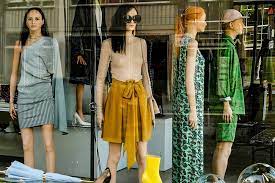
Factors to Consider while Purchasing Clothes The Ultimate Guide
Factors to Consider while Purchasing Clothes The Ultimate Guide
In the vast world of fashion, purchasing clothes can be an exhilarating yet overwhelming experience. With countless options available, it’s essential to navigate through the multitude of factors that influence our choices. From personal style preferences to material quality and sustainability concerns, each decision can significantly impact our satisfaction with our purchases. In this comprehensive guide, we’ll explore the crucial factors to consider when buying clothes, empowering you to make informed and fulfilling choices.
Understanding Personal Style:
One of the most fundamental aspects of clothing purchases is understanding your personal style. Your style reflects your personality, lifestyle, and preferences, guiding you towards garments that resonate with your individuality. Take the time to explore different styles, from classic and timeless to trendy and eclectic, to pinpoint what truly speaks to you. Experimenting with various silhouettes, colors, and patterns can help you refine your aesthetic and build a wardrobe that feels authentic and expressive.
Fit and Comfort:
No matter how stylish a garment may be, if it doesn’t fit well or feels uncomfortable, it’s unlikely to become a staple in your wardrobe. Prioritize fit and comfort when shopping for clothes, opting for pieces that flatter your body shape and allow for ease of movement. Pay attention to sizing charts, but also be prepared to try on different sizes as sizing can vary between brands and styles. Additionally, consider the fabric’s texture and breathability, especially if you have sensitivities or live in a climate with extreme temperatures.
Quality and Durability:
Investing in high-quality clothing pays off in the long run, as durable garments not only last longer but also maintain their appearance and shape over time. When assessing quality, examine the construction techniques, stitching, and fabric composition of the clothing item. Natural fibers like cotton, wool, and silk tend to be more durable and breathable than synthetic materials. While higher quality often comes with a higher price tag, it’s a worthwhile investment that can save you money in the long term by reducing the frequency of replacements.
Versatility and Timelessness:
Versatile clothing pieces offer maximum utility by seamlessly transitioning between different occasions and outfits. When shopping, consider how well a garment integrates into your existing wardrobe and its potential for mix-and-match versatility. Timeless classics such as tailored blazers, white button-down shirts, and well-fitted denim never go out of style and can serve as the foundation of a versatile wardrobe. Balance trend-driven pieces with timeless staples to create a wardrobe that remains relevant and adaptable year after year.
Ethical and Sustainable Practices:
As awareness of environmental and social issues grows, many consumers are prioritizing ethical and sustainable fashion choices. Before making a purchase, research the brand’s production practices, including their labor conditions, environmental impact, and commitment to sustainability. Look for certifications such as Fair Trade, Global Organic Textile Standard (GOTS), or Bluesign® that indicate adherence to ethical and eco-friendly standards. Additionally, consider alternative shopping options such as thrifting, clothing rental services, or supporting local artisans and small-scale designers.
Budget and Value:
Setting a budget is essential to ensure that your clothing purchases align with your financial priorities and constraints. Determine how much you’re willing to spend on individual items or your overall wardrobe and prioritize purchases based on your needs and preferences. While it’s tempting to chase bargains and discounts, prioritize value over price by considering the cost per wear and long-term durability of each garment. Allocate your budget towards key wardrobe essentials and investment pieces that offer lasting value and versatility.
Consideration of Occasion and Lifestyle:
The context in which you’ll be wearing a garment plays a significant role in determining its suitability and relevance to your wardrobe. Consider your lifestyle, daily activities, and typical dress codes when making clothing purchases. Invest in work-appropriate attire if you have a professional job, versatile athleisure wear for active lifestyles, or elegant eveningwear for special occasions. Prioritize comfort and functionality without sacrificing style, ensuring that your wardrobe meets the demands of your lifestyle.
Personal Values and Expression:
Beyond practical considerations, clothing serves as a form of self-expression, allowing us to communicate our values, beliefs, and identities to the world. Choose clothing that aligns with your personal values and reflects who you are as an individual. Whether you prefer minimalist aesthetics, bold prints, or vintage-inspired looks, let your style choices reflect your authentic self. Embrace experimentation and creativity, using clothing as a canvas to express your unique personality and artistic sensibilities.
Conclusion:
Purchasing clothes is a deeply personal and multifaceted process influenced by a myriad of factors. By understanding and considering factors such as personal style, fit and comfort, quality and durability, versatility, ethical and sustainable practices, budget, occasion and lifestyle, and personal values, you can make informed and fulfilling clothing choices. Ultimately, building a wardrobe that resonates with your individuality and meets your practical needs is a journey of self-discovery and self-expression, empowering you to look and feel your best every day.